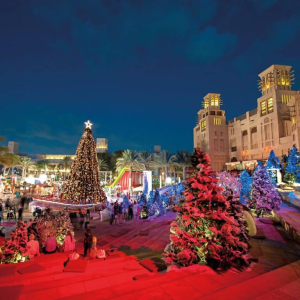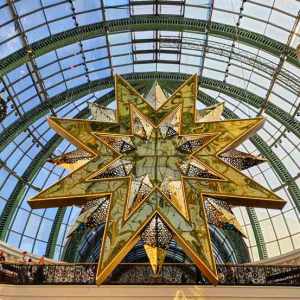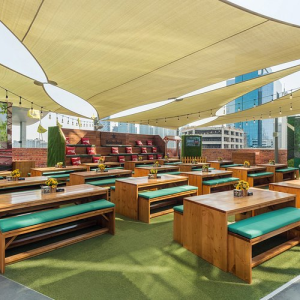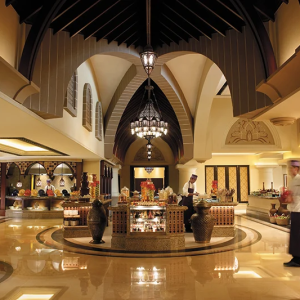Dubai Creek Tower is one of the most ambitious architectural projects in the world today. It is poised to redefine Dubai’s skyline and stand as a symbol of human innovation and ambition. Planned to rival or even surpass the Burj Khalifa, the tower is more than just a building; it is a statement about Dubai’s vision, engineering capabilities, and global aspirations. This article explores everything about the Dubai Creek Tower—from its design and construction journey to its economic, cultural, and global significance.
Introduction
Dubai has always been synonymous with extraordinary architecture, luxury, and innovation. From the Burj Khalifa to the Palm Jumeirah, the city has continuously pushed the boundaries of what is possible. The Dubai Creek Tower continues this legacy, representing a new chapter in Dubai’s story. Located in the Dubai Creek Harbour district, the tower is designed to be an architectural landmark, combining cutting-edge engineering with a design inspired by cultural heritage.
The tower is expected to attract millions of visitors, provide luxurious amenities, and elevate Dubai’s position on the global stage. More than just a tourist attraction, it is a statement of Dubai’s ambition, blending aesthetic beauty with technological innovation.

The Vision Behind Dubai Creek Tower
Conceptualization
The Dubai Creek Tower was envisioned by Santiago Calatrava, a world-renowned Spanish architect and structural engineer known for designing iconic buildings and bridges worldwide. The tower’s design is inspired by the traditional Islamic minaret, a symbol of faith and culture in the region. Calatrava combined this traditional concept with modern engineering to create a slender, cable-supported structure that tapers gracefully toward the top, ending in a pointed “bud” design.
This design is not only visually stunning but also highly functional. The tapering structure reduces wind resistance, and the cable-supported design allows for stability and flexibility at extreme heights. Dubai Creek Tower is intended to be a symbol of innovation while paying homage to the region’s cultural roots.

Architectural Features
The tower is packed with innovative features and amenities:
- Height: While initial plans suggested a height exceeding 1,300 meters, recent adjustments place it slightly below the Burj Khalifa’s 828 meters. Even at this height, it will remain one of the tallest buildings in the world.
- Observation Decks: Multiple observation decks will allow visitors to enjoy breathtaking panoramic views of Dubai and its surroundings. These decks will also offer unique experiences such as glass-floor viewing platforms.
- Sky Gardens and Luxury Amenities: The tower will feature sky gardens, fine dining restaurants, boutique hotels, and leisure spaces. Visitors can experience luxury at extreme heights, making the tower more than just a visual landmark.
- Lighting: A dynamic lighting system is planned for the tower’s peak, illuminating the structure at night and making it visible across the city as a symbolic beacon.
- Sustainability: Modern engineering methods and green technologies are incorporated into the design to ensure energy efficiency and reduced environmental impact.
Construction Journey
Initial Construction
Construction of Dubai Creek Tower began in October 2016. The early stages focused on creating a strong foundation capable of supporting the immense weight and height of the tower. A key milestone was the completion of the pile cap, a massive structural component designed to transfer the tower’s load safely to the ground.
Construction progressed rapidly, but like many large-scale projects, it faced challenges along the way. The scale of the tower required innovative techniques, high-quality materials, and precise engineering to ensure safety and durability.
Challenges and Delays
The COVID-19 pandemic in 2020 significantly impacted construction schedules. Work was temporarily halted, and global supply chain disruptions slowed the delivery of materials and equipment. Additionally, the pandemic created uncertainty regarding workforce availability and project timelines.
Apart from global events, technical challenges were also part of the construction process. The sheer height of the building required advanced engineering solutions to counter wind loads, seismic activity, and material stress. Design revisions were necessary to ensure structural safety without compromising the tower’s aesthetic vision.
Resumption and Redesign
Construction resumed with renewed vigor, incorporating design modifications and technological upgrades. These revisions included adjustments to the height, structural reinforcements, and enhanced amenities for visitors. Although slightly shorter than originally planned, the Dubai Creek Tower is still expected to be a world-class landmark.
The construction team continues to push the boundaries of engineering, using advanced machinery, reinforced materials, and modern construction methods to bring the tower closer to completion.
Economic Significance
Investment and Development
Dubai Creek Tower is one of the most significant projects undertaken by Emaar Properties, one of the largest real estate developers in the UAE. The tower represents billions of dollars in investment and is expected to stimulate the local economy in multiple ways.
The surrounding Dubai Creek Harbour development will benefit from increased tourism, residential and commercial growth, and global recognition. Luxury hotels, retail spaces, and entertainment venues in the vicinity are expected to thrive as a result of the tower’s presence.
Job Creation
The construction of Dubai Creek Tower has generated thousands of jobs in engineering, construction, design, and tourism sectors. Once operational, it will create additional employment opportunities in hospitality, retail, and event management.
Boost to Tourism
As a global attraction, the tower will draw visitors from across the world. Its observation decks, sky gardens, and luxury amenities will enhance Dubai’s reputation as a premier tourist destination. The tower will also provide unique photo opportunities and experiences, making it a must-visit landmark for travelers.
Cultural Significance
Dubai Creek Tower is more than just an architectural achievement—it is a cultural statement. Its design draws from Islamic heritage while embracing modernity, reflecting Dubai’s identity as a city that honors its traditions while pushing toward the future.
The tower is expected to become a symbol of national pride, similar to how the Burj Khalifa has come to represent Dubai on the global stage. It will also be a hub for events, exhibitions, and cultural activities, further embedding it into the social and cultural fabric of the city.
Global Architectural Context
Dubai Creek Tower is set to compete with other iconic skyscrapers globally. While it may not surpass the Burj Khalifa in final height, its design, functionality, and symbolic significance place it among the most remarkable structures ever conceived.
The tower showcases the evolution of architectural design—combining sustainability, luxury, engineering precision, and cultural symbolism. Its cable-supported structure is unique among supertall buildings and demonstrates the potential of modern engineering to overcome natural and technical limitations.
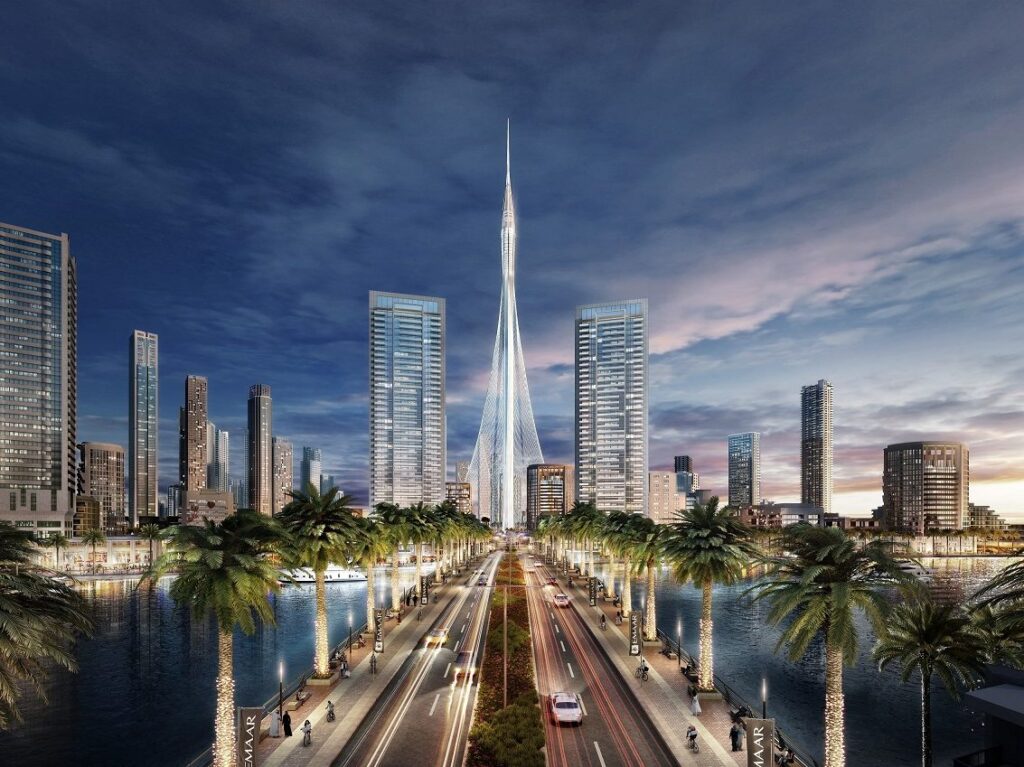
Tourism and Visitor Experience
Visitors to Dubai Creek Tower will enjoy a range of attractions and experiences:
- Observation Decks: Multiple levels of observation decks offer stunning views of the city, the desert, and the coastline. Glass floors add a thrilling perspective of the height.
- Sky Gardens: Visitors can enjoy lush greenery and peaceful spaces high above the city, offering a unique escape from urban life.
- Luxury Restaurants: Fine dining at incredible heights will provide an unforgettable culinary experience.
- Cultural Exhibitions: Planned exhibitions will showcase Dubai’s history, culture, and the development of modern architecture.
These experiences are designed to make the tower a global destination for leisure, luxury, and culture.
Future Prospects
Dubai Creek Tower represents Dubai’s commitment to pushing the boundaries of what is possible. Even as challenges and setbacks have occurred, the project continues to inspire engineers, architects, and tourists worldwide.
Once completed, the tower will become a defining element of Dubai’s skyline. It will serve as a symbol of innovation, progress, and ambition—an architectural masterpiece that demonstrates how vision, technology, and culture can converge to create something extraordinary.
The surrounding Dubai Creek Harbour development is expected to flourish, with residential, commercial, and recreational facilities benefiting from the tower’s presence. The tower’s impact will extend far beyond architecture, influencing tourism, the economy, and cultural identity.
Conclusion
Dubai Creek Tower is not just a skyscraper—it is a symbol of human ambition, architectural ingenuity, and cultural pride. Rising above the Dubai Creek Harbour district, it promises to redefine skylines, offer unparalleled experiences, and become an icon recognized worldwide.
Despite challenges such as pandemics, technical difficulties, and design revisions, the project demonstrates resilience and determination. As it nears completion, Dubai Creek Tower will stand as a testament to innovation, luxury, and the relentless pursuit of excellence, inspiring future generations and securing Dubai’s place in the world’s architectural history.
Dubai Creek Tower is a reminder that human vision knows no limits, and with determination and creativity, the sky is truly the limit.
Do follow UAE Stories on Instagram
Read More: Ulta Beauty’s Middle East Expansion: First Stores in Kuwait and Dubai



